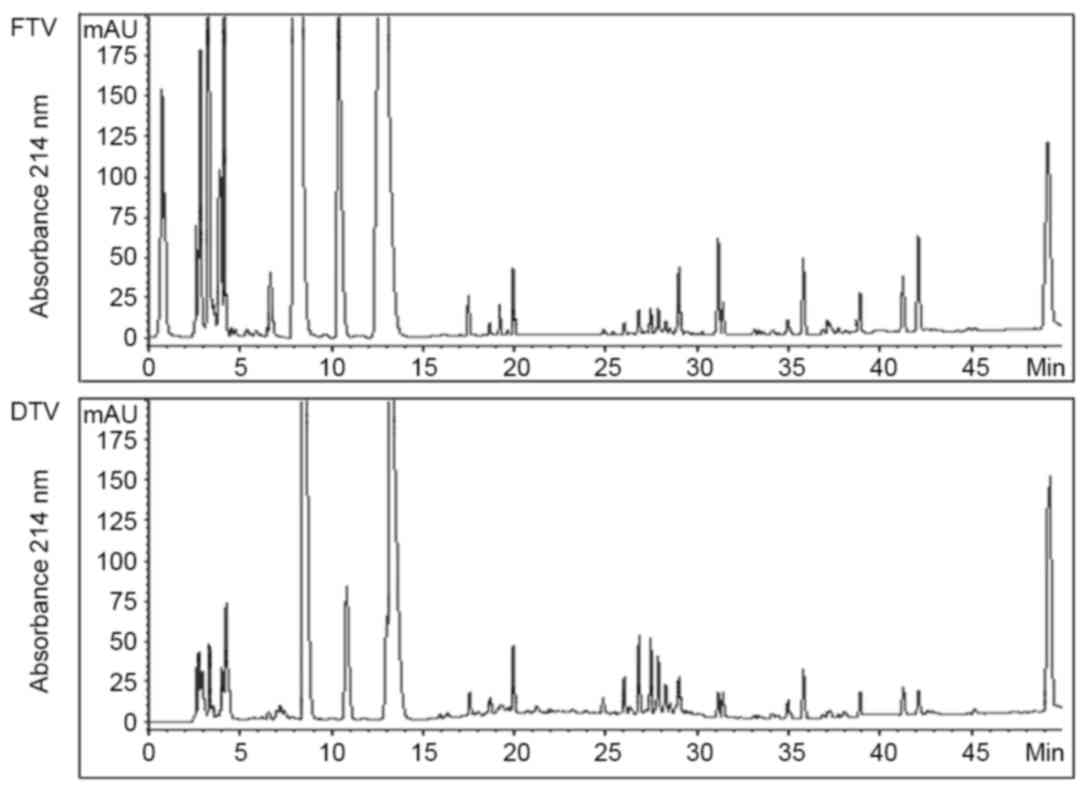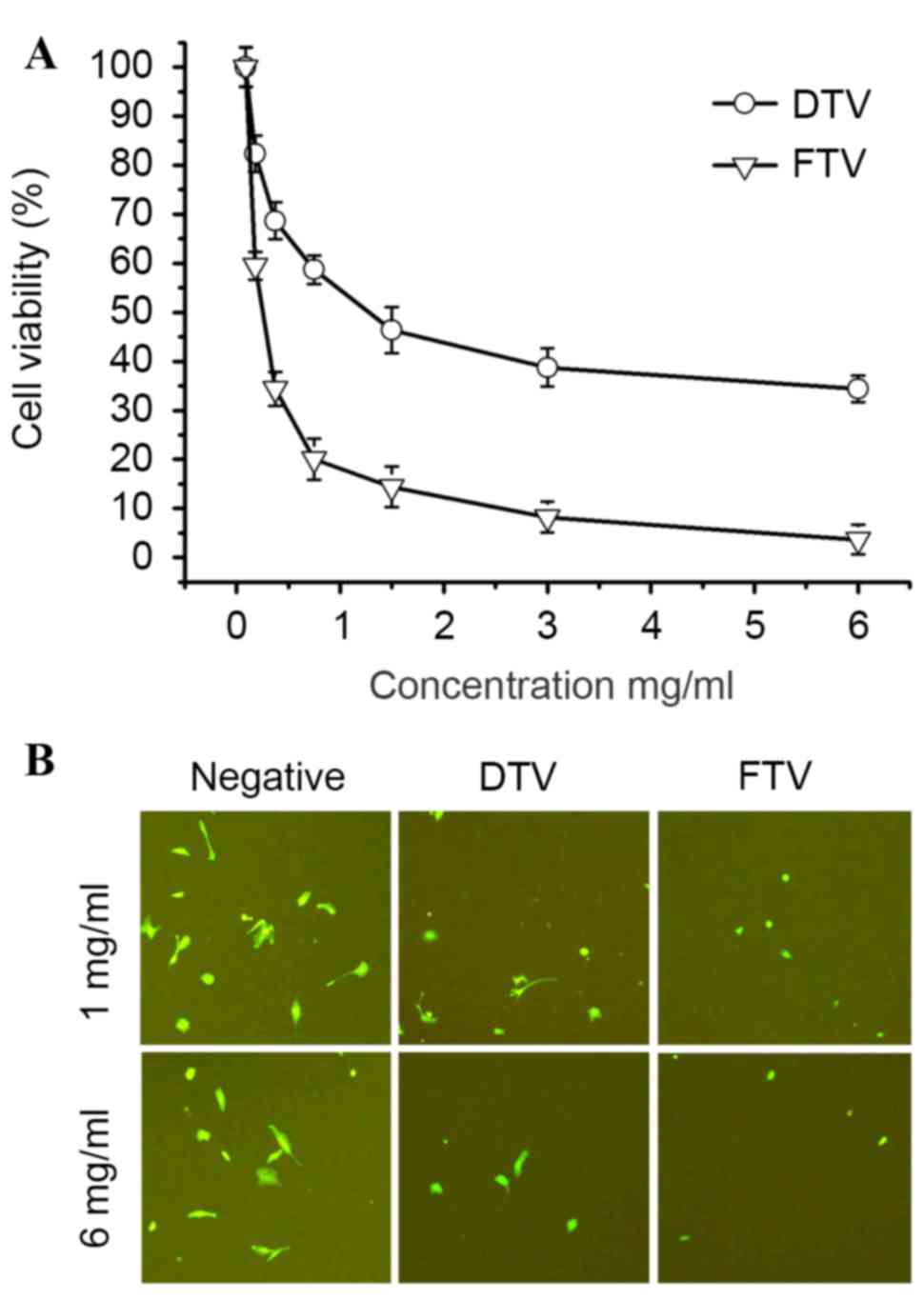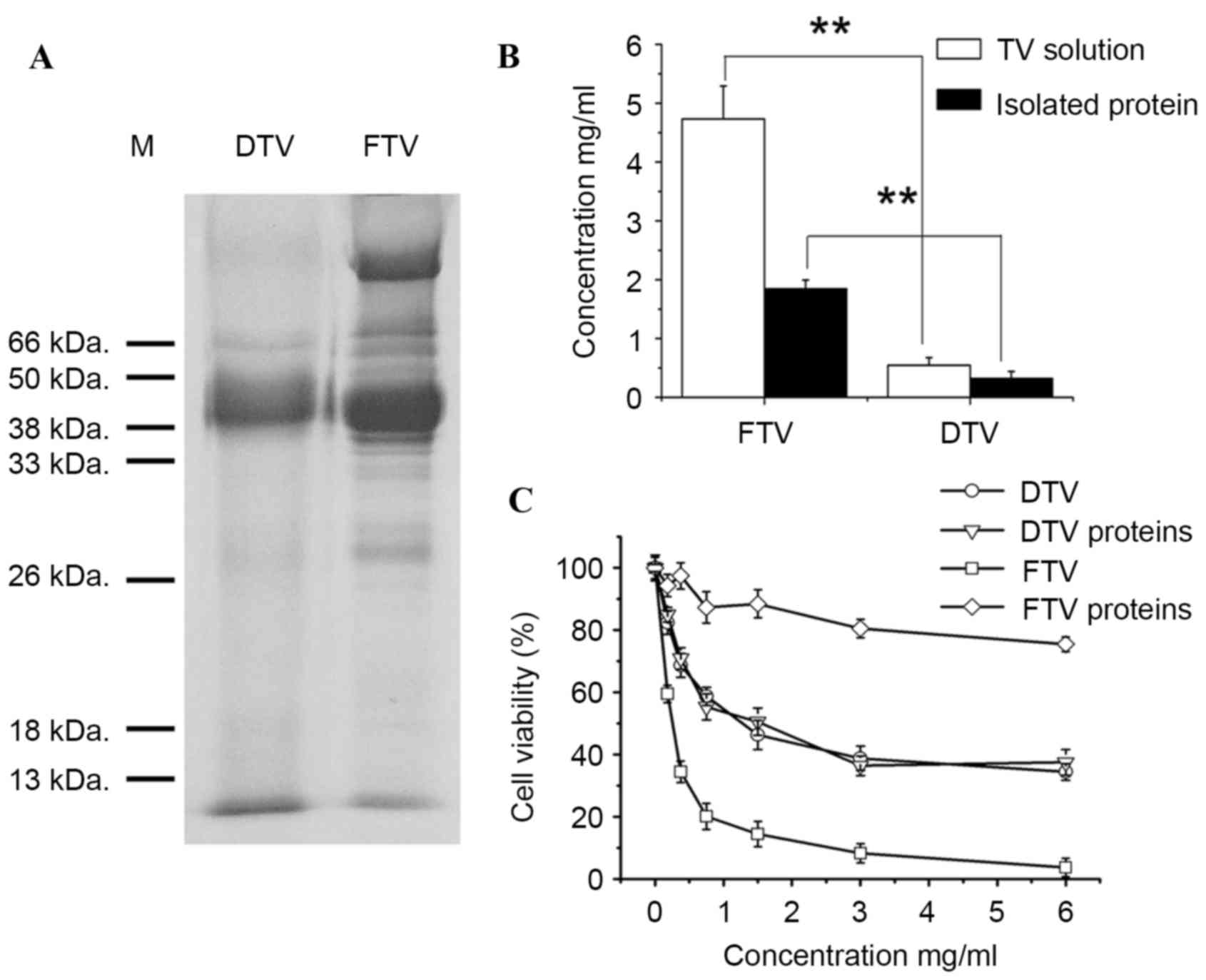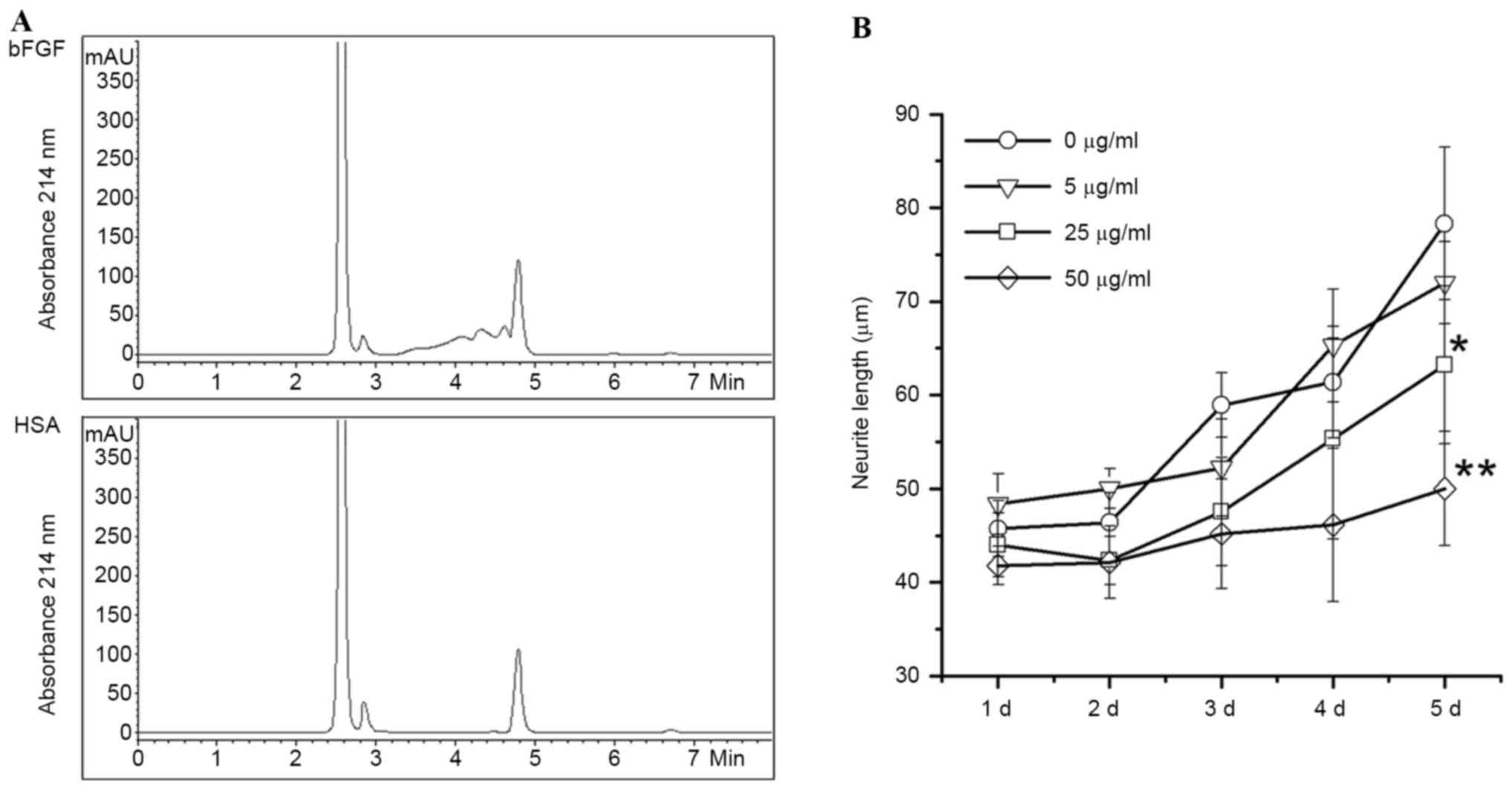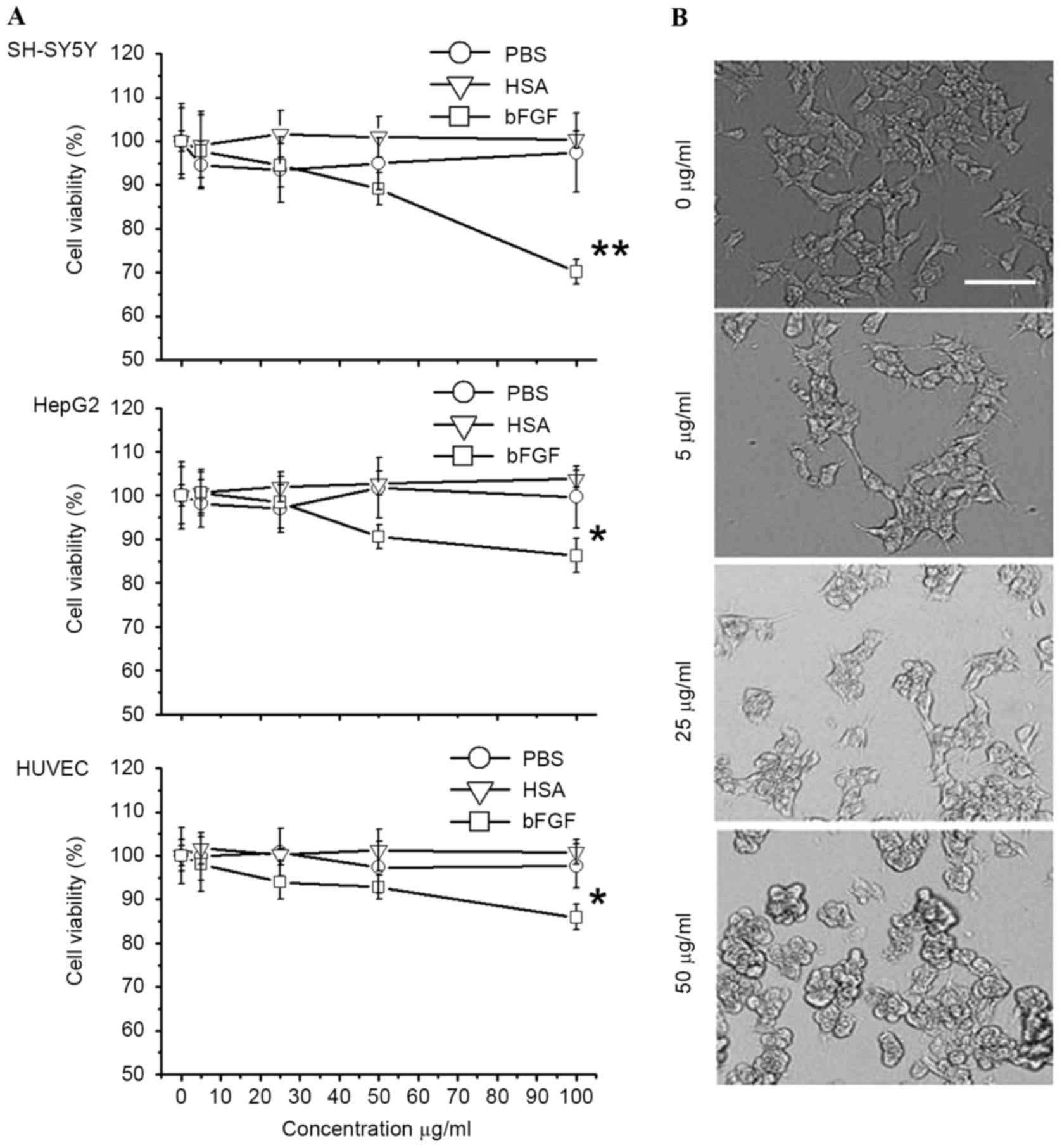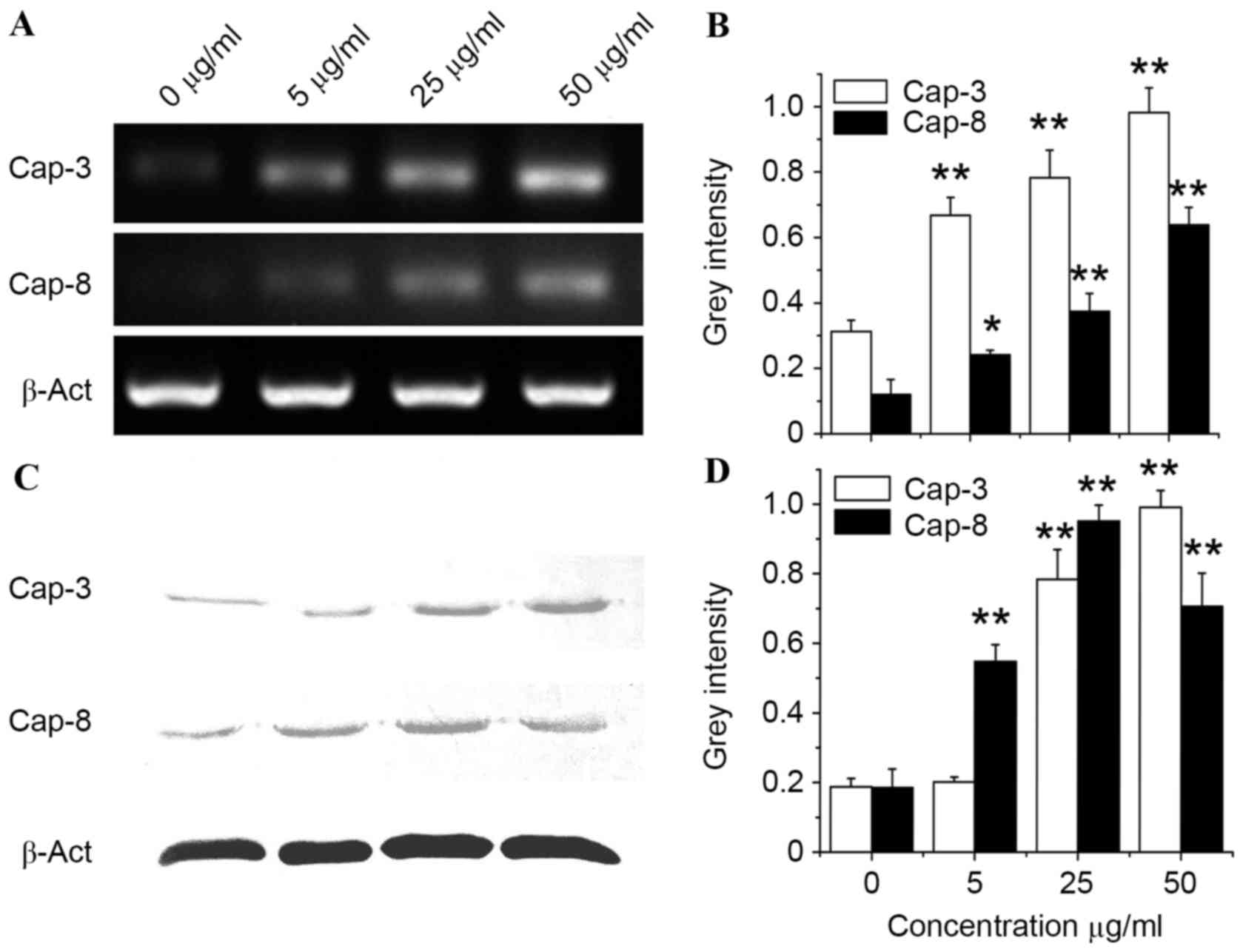|
1
|
The State Pharmacopoeia Commission of PR
China, . Pharmacopoeia of the People's Republic of China. 2010. 1.
Chemical Industry Publishing House; Beijing: pp. 360. 2010
|
|
2
|
Meng Z, Yang P, Shen Y, Bei W, Zhang Y, Ge
Y, Newman RA, Cohen L, Liu L, Thornton B, et al: Pilot study of
huachansu in patients with hepatocellular carcinoma, nonsmall-cell
lung cancer, or pancreatic cancer. Cancer. 115:5309–5318. 2009.
View Article : Google Scholar : PubMed/NCBI
|
|
3
|
Zhang SJ, Zhang YT, Zhao JH, Shen LN, Shi
F and Feng NP: Preparation and in vitro anti-tumor properties of
toad venom extract-loaded solid lipid nanoparticles. Pharmazie.
68:653–660. 2013.PubMed/NCBI
|
|
4
|
Qiao L, Huang YF, Cao JQ, Zhou YZ, Qi XL
and Pei YH: One new bufadienolide from Chinese drug ‘Chan'Su’. J
Asian Nat Prod Res. 10:233–237. 2008. View Article : Google Scholar : PubMed/NCBI
|
|
5
|
Li J, Ma X, Li F, Wang J, Chen H, Wang G,
Lv X, Sun C and Jia J: Preparative separation and purification of
bufadienolides from Chinese traditional medicine of ChanSu using
high-speed counter-current chromatography. J Sep Sci. 33:1325–1330.
2010.PubMed/NCBI
|
|
6
|
Zhang DM, Liu JS, Deng LJ, Chen MF, Yiu A,
Cao HH, Tian HY, Fung KP, Kurihara H, Pan JX and Ye WC:
Arenobufagin, a natural bufadienolide from toad venom, induces
apoptosis and autophagy in human hepatocellular carcinoma cells
through inhibition of PI3K/Akt/mTOR pathway. Carcinogenesis.
34:1331–1342. 2013. View Article : Google Scholar : PubMed/NCBI
|
|
7
|
Zhu Z, Li E and Liu Y, Gao Y, Sun H, Wang
Y, Wang Z, Liu X, Wang Q and Liu Y: Bufalin induces the apoptosis
of acute promyelocytic leukemia cells via the downregulation of
survivin expression. Acta Haematol. 128:144–150. 2012. View Article : Google Scholar : PubMed/NCBI
|
|
8
|
Hong SH, Kim GY, Chang YC, Moon SK, Kim WJ
and Choi YH: Bufalin prevents the migration and invasion of T24
bladder carcinoma cells through the inactivation of matrix
metalloproteinases and modulation of tight junctions. Int J Oncol.
42:277–286. 2013.PubMed/NCBI
|
|
9
|
Chen YY, Lu HF, Hsu SC, Kuo CL, Chang SJ,
Lin JJ, Wu PP, Liu JY, Lee CH, Chung JG and Chang JB: Bufalin
inhibits migration and invasion in human hepatocellular carcinoma
SK-Hep1 cells through the inhibitions of NF-κB and matrix
metalloproteinase-2/−9-signaling pathways. Environ Toxicol.
30:74–82. 2015. View Article : Google Scholar : PubMed/NCBI
|
|
10
|
Zhai XF, Fang FF, Liu Q, Meng YB, Guo YY
and Chen Z: MiR-181a contributes to bufalin-induced apoptosis in
PC-3 prostate cancer cells. BMC Complement Altern Med. 13:3252013.
View Article : Google Scholar : PubMed/NCBI
|
|
11
|
Miller YE: Bombesin-like peptides: From
frog skin to human lung. Am J Respir Cell Mol Biol. 3:189–190.
1990. View Article : Google Scholar : PubMed/NCBI
|
|
12
|
Simmaco M, Severini C, De Biase D, Barra
D, Bossa F, Roberts JD, Melchiorri P and Erspamer V: Six novel
tachykinin- and bombesin-related peptides from the skin of the
Australian frog Pseudophryne guntheri. Peptides. 11:299–304. 1990.
View Article : Google Scholar : PubMed/NCBI
|
|
13
|
Lee WH, Li Y, Lai R, Li S, Zhang Y and
Wang W: Variety of antimicrobial peptides in the Bombina maxima
toad and evidence of their rapid diversification. Eur J Immunol.
35:1220–1229. 2005. View Article : Google Scholar : PubMed/NCBI
|
|
14
|
King JD, Leprince J, Vaudry H, Coquet L,
Jouenne T and Conlon JM: Purification and characterization of
antimicrobial peptides from the Caribbean frog, Leptodactylus
validus (Anura: Leptodactylidae). Peptides. 29:1287–1292. 2008.
View Article : Google Scholar : PubMed/NCBI
|
|
15
|
Bevins CL and Zasloff M: Peptides from
frog skin. Annu Rev Biochem. 59:395–414. 1990. View Article : Google Scholar : PubMed/NCBI
|
|
16
|
Bechinger B, Zasloff M and Opella SJ:
Structure and orientation of the antibiotic peptide magainin in
membranes by solid-state nuclear magnetic resonance spectroscopy.
Protein Sci. 2:2077–2084. 1993. View Article : Google Scholar : PubMed/NCBI
|
|
17
|
Westerhoff HV, Zasloff M, Rosner JL,
Hendler RW, De Waal A, Vaz Gomes A, Jongsma PM, Riethorst A and
Juretić D: Functional synergism of the magainins PGLa and
magainin-2 in Escherichia coli, tumor cells and liposomes. Eur J
Biochem. 228:257–264. 1995. View Article : Google Scholar : PubMed/NCBI
|
|
18
|
Ohsaki Y, Gazdar AF, Chen HC and Johnson
BE: Antitumor activity of magainin analogues against human lung
cancer cell lines. Cancer Res. 52:3534–3538. 1992.PubMed/NCBI
|
|
19
|
Baker MA, Maloy WL, Zasloff M and Jacob
LS: Anticancer efficacy of Magainin2 and analogue peptides. Cancer
Res. 53:3052–3057. 1993.PubMed/NCBI
|
|
20
|
Giacometti A, Ghiselli R, Cirioni O,
Mocchegiani F, D'Amato G, Orlando F, Sisti V, Kamysz W, Silvestri
C, Naldoski P, et al: Therapeutic efficacy of the magainin analogue
MSI-78 in different intra-abdominal sepsis rat models. J Antimicrob
Chemother. 54:654–660. 2004. View Article : Google Scholar : PubMed/NCBI
|
|
21
|
Shin SY, Kang JH, Jang SY, Kim Y, Kim KL
and Hahm KS: Effects of the hinge region of cecropin
A(1–8)-magainin 2(1–12), a synthetic antimicrobial peptide, on
liposomes, bacterial and tumor cells. Biochim Biophys Acta.
1463:209–218. 2000. View Article : Google Scholar : PubMed/NCBI
|
|
22
|
Takeshima K, Chikushi A, Lee KK, Yonehara
S and Matsuzaki K: Translocation of analogues of the antimicrobial
peptides magainin and buforin across human cell membranes. J Biol
Chem. 278:1310–1315. 2003. View Article : Google Scholar : PubMed/NCBI
|
|
23
|
Gibson BW, Tang DZ, Mandrell R, Kelly M
and Spindel ER: Bombinin-like peptides with antimicrobial activity
from skin secretions of the Asian toad, Bombina orientalis. J Biol
Chem. 266:23103–23111. 1991.PubMed/NCBI
|
|
24
|
Kubo H, Cao R, Brakenhielm E, Makinen T,
Cao Y and Alitalo K: Blockade of vascular endothelial growth factor
receptor-3 signaling inhibits fibroblast growth factor-2-induced
lymphangiogenesis in mouse cornea. Proc Natl Acad Sci USA. 99:pp.
8868–8873. 2002; View Article : Google Scholar : PubMed/NCBI
|
|
25
|
Demirkesen C, Büyükpinarbasili N,
Ramazanoğlu R, Oğuz O, Mandel NM and Kaner G: The correlation of
angiogenesis with metastasis in primary cutaneous melanoma: A
comparative analysis of microvessel density, expression of vascular
endothelial growth factor and basic fibroblastic growth factor.
Pathology. 38:132–137. 2006. View Article : Google Scholar : PubMed/NCBI
|
|
26
|
Huang J, Wu L, Tashiro S, Onodera S and
Ikejima T: Fibroblast growth factor-2 suppresses oridonin-induced
L929 apoptosis through extracellular signal-regulated
kinase-dependent and phosphatidylinositol 3-kinase-independent
pathway. J Pharmacol Sci. 102:305–313. 2006. View Article : Google Scholar : PubMed/NCBI
|
|
27
|
Liu JF, Crepin M, Liu JM, Barritault D and
Ledoux D: FGF-2 and TPA induce matrix metalloproteinase-9 secretion
in MCF-7 cells through PKC activation of the Ras/ERK pathway.
Biochem Biophys Res Commun. 293:1174–1182. 2002. View Article : Google Scholar : PubMed/NCBI
|
|
28
|
Suyama K, Shapiro I, Guttman M and Hazan
RB: A signaling pathway leading to metastasis is controlled by
N-cadherin and the FGF receptor. Cancer Cell. 2:301–314. 2002.
View Article : Google Scholar : PubMed/NCBI
|
|
29
|
Qian Y, Zheng Y and Tiffany-Castiglioni E:
Valproate reversibly reduces neurite outgrowth by human SY5Y
neuroblastoma cells. Brain Res. 1302:21–33. 2009. View Article : Google Scholar : PubMed/NCBI
|
|
30
|
Ferreira PM, Lima DJ, Debiasi BW, Soares
BM, Kda C Machado, Jda C Noronha, Dde J Rodrigues, Sinhorin AP,
Pessoa C and Vieira GM Jr: Antiproliferative activity of Rhinella
marina and Rhaebo guttatus venom extracts from Southern Amazon.
Toxicon. 72:43–51. 2013. View Article : Google Scholar : PubMed/NCBI
|
|
31
|
Li D, Wang H, Xiang JJ, Deng N, Wang PP,
Kang YL, Tao J and Xu M: Monoclonal antibodies targeting basic
fibroblast growth factor inhibit the growth of B16 melanoma in vivo
and in vitro. Oncol Rep. 24:457–463. 2010.PubMed/NCBI
|
|
32
|
Polec A, Fedorcsak P, Eskild A and Tanbo
TG: The interplay of human chorionic gonadotropin (hCG) with basic
fibroblast growth factor and adipokines on angiogenesis in vitro.
Placenta. 35:249–253. 2014. View Article : Google Scholar : PubMed/NCBI
|
|
33
|
Xu Z, Shi H, Mei Q, Shen Y and Xu J:
Effects of macrophage metalloelastase on the basic fibroblast
growth factor expression and tumor angiogenesis in murine colon
cancer. Dig Dis Sci. 57:85–91. 2012. View Article : Google Scholar : PubMed/NCBI
|















